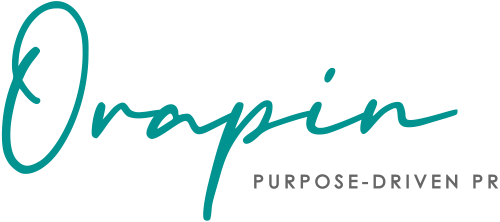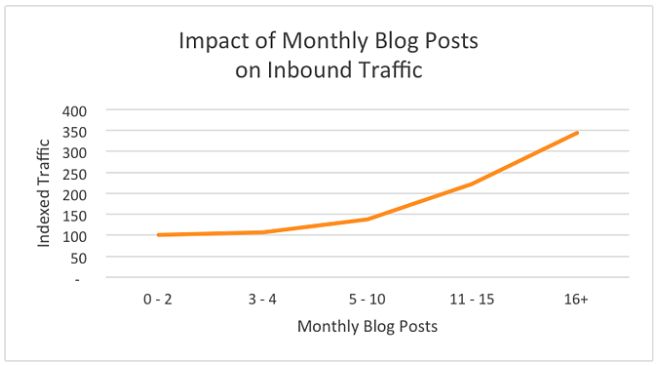
As a leader of a purpose-driven company, sharing your stories, your knowledge, and your mission is a must
If you are working to solve the world’s greatest problems, people need to know about it. Sharing your expertise, experiences, and mission is important. Everyone has a story to tell, and by sharing yours or your organizations’, you are effectively helping make the world a better place. It sounds cheesy, but it’s true. Why not amplify the voice of the individuals you serve? Why not educate the greater community on the problems you are working to solve? Why not share your successes and challenges with others? Knowledge is power, so start sharing those stories.
That seems overwhelming, where do I start?
Start by producing content. If you’ve been following our 7 P’s of PR, then you know that “Produce” is one of the key areas of focus for any PR strategy. When we say “produce” we refer to producing owned content, otherwise known as the content you create such as blogs, social content, newsletters, podcasts, infographics, etc., for either an internal or external audience.
Owned content is also a key tenant of the PESO model which is a great foundation for any organization’s PR strategy. Owned content is a fantastic way to engage with your audience, your stakeholders, constituents, and the individuals your business or organization serves and provides multiple opportunities for you to educate, inform, and inspire. For leaders of purpose-driven businesses and those who are working hard to make a meaningful impact in the world, producing owned content is a must.
Produce content for a variety of channels
There are a variety of channels for which one can produce content. Each can be used for the purpose of amplifying a message and strategically positioning you as an authority and leading voice in your field. Each platform also provides opportunities to engage with audiences in slightly different ways and to share your ideas and opinions.
In an ideal world, an organization would use all platforms to maximize the reach of its voice and message. However, knowing that time and resources are limited for most of us, let’s start with a dip into several platforms. If you are just starting out with producing your own content, you may want to select three platforms to start. If you have been producing thought leadership content for a while, select a couple of new channels to try which you have not yet explored.
1. Social media: Social media is a must for any organization as it provides a quick and easy way to educate, inform, and advocate which can, in turn, affect real change. Success on social media is often determined by one’s bandwidth to post quality content with consistent frequency and the ability to respond and engage with one’s audience. Each platform has different recommendations for the frequency of posts, ranging from a few times per week to several times per day. Creating quality content for social media can be a big job, but is quite valuable in its ability to provide daily connection with one’s audience, keeping your organization top of mind for donors, stakeholders, supporters, and clients.
2. E-newsletters: Newsletters are a great platform for storytelling. Whether you want to profile the outcome of a big campaign, a family who has benefited from your organization’s work, a dedicated volunteer, or a favorite staff member, an e-newsletter is the perfect place to house this type of content. Further, e-newsletters can be a great place to share industry expertise and thought leadership. They are a good platform for advice, tips, and organizational status updates, and can provide opportunities to highlight calls-to-action or upcoming events and fundraisers. Ideally, e-newsletters should be distributed every two weeks and at a minimum once per month.
3. Blog: Blogs are another fantastic medium for storytelling and for sharing news that is important to your organization, though not quite press-worthy, such as the remodel of your youth center or your new community engagement program. Blogs are great for highlighting partnerships, sharing profile stories, and providing commentary on current events or happenings in your organization. Blog posts should be published frequently, as they are an important tool for boosting SEO and web traffic. According to Marketing Insider Group, 11+ posts per month is a best practice, but as this graphic shows, the higher the frequency, the greater your web traffic.
4. Guest Blogs: When a leader in your organization provides content for a media or partner website’s blog, it is known as a guest blog. For example, if you are a mental health center, your CEO would get great exposure by posting on a reputable mental health news site or professional organization’s blog. Or if you are a nonprofit executive director, you might do a guest blog post for a community organization with similar values, a partner organization, or a community news site. Getting guest blogs published is achieved through pitching, relationships, and hard work. On the flip side, their value lies in the third-party endorsement for your organization, their ability to showcase your thought leadership and amplify your cause, and they can be good for SEO as they often provide links back to your own site.
5. Webinars: Webinars provide the opportunity to produce high-quality visual content and share expertise on specific topics that are of interest to your stakeholders. Webinars are beneficial in their ability to facilitate Q&A and direct interaction with audience members. They provide the opportunity for you to do a deep dive into your cause and share your passion for your work. During pandemic times, they are a great way to build “in-person” connections without being actually in-person. They can be repurposed on your website or social channels, thus expanding their reach and extending the longevity of the content.
6. Self-published/contributed articles: Self-published and/or contributed articles, otherwise known as “bylines,” are articles on a specific topic or area of expertise that you pitch and, hopefully, have published on a third-party website. Bylines are excellent ways to showcase the expertise of you and your organization or highlight your unique take on a specific issue or societal challenge. They build clout and can be a fantastic method to reach new audiences who may not be familiar with your cause. Finally, they can also be a great SEO opportunity through the linkbacks to your site. Be sure to check out our in-depth guide to contributed article strategy before you get started!
7. Speaking presentations: Speaking presentations, much like webinars, are also a great opportunity to share your expertise with a targeted audience. If you have a cause and want the world to know about the big problems you are working hard to solve, then you should be securing speaking engagements. Preparation is a key part of this strategy and we recommend creating a speaker’s bio, a synopsis of several speaking topics, and creating a landing page on your website which highlights your speaker’s bio, links to any speaking gigs you’ve done in the past, and any quotes or testimonials from event attendees. Speaking engagements are typically booked 8-12 months out, so advanced planning is required!
Pro-tip: Start small with local organizations and events to build your speaker’s resume. SXSW won’t book you if you’ve never been on stage!
8. Award nominations: Award nominations are a great way to earn recognition, build clout, and raise awareness for your organization. And many times we’ve seen our nominations turn into feature stories on the nominee or organization. It is certainly worth taking time to produce nominations for key industry, business, and local awards.
9. Ebooks: Ebooks are a fantastic way to compile and share lengthy and in-depth information with your target audiences. For example, a nonprofit organization might write an ebook that provides an outline and in-depth assessment of the social issue that their organization is trying to solve. An addiction recovery center might create an ebook on the different types of addiction treatment models and their applications. Ebooks are not short form, they are a brain dump of all the nitty-gritty details, and can be quite valuable to the right audience for just that reason.
Now is the time. Get to work!
Producing owned content is an opportunity to share your knowledge, expertise, advice, and opinions and position your organization and leadership as go-to authorities. It is a way to tell your stories and engage with your audiences. To produce content is to amplify your message, bring attention to your cause, and share your passions and your work with others. For these reasons, it is one of the most valuable marketing tools in your toolbox. You owe it to the world to share your story and your work, to teach others to solve similar problems. So don’t hesitate, get started today!
Photo by Cytonn Photography on Unsplash

Diana Crawford is a seasoned public relations consultant with more than 15 years of agency, consulting, and in-house experience. She joined Orapin in 2013 and manages account services and client communications strategy development. She has worked across a variety of industries and has expertise with professional services, food/alcohol, health and wellness, lifestyle, sports, education, tech, and non-profit organizations.

